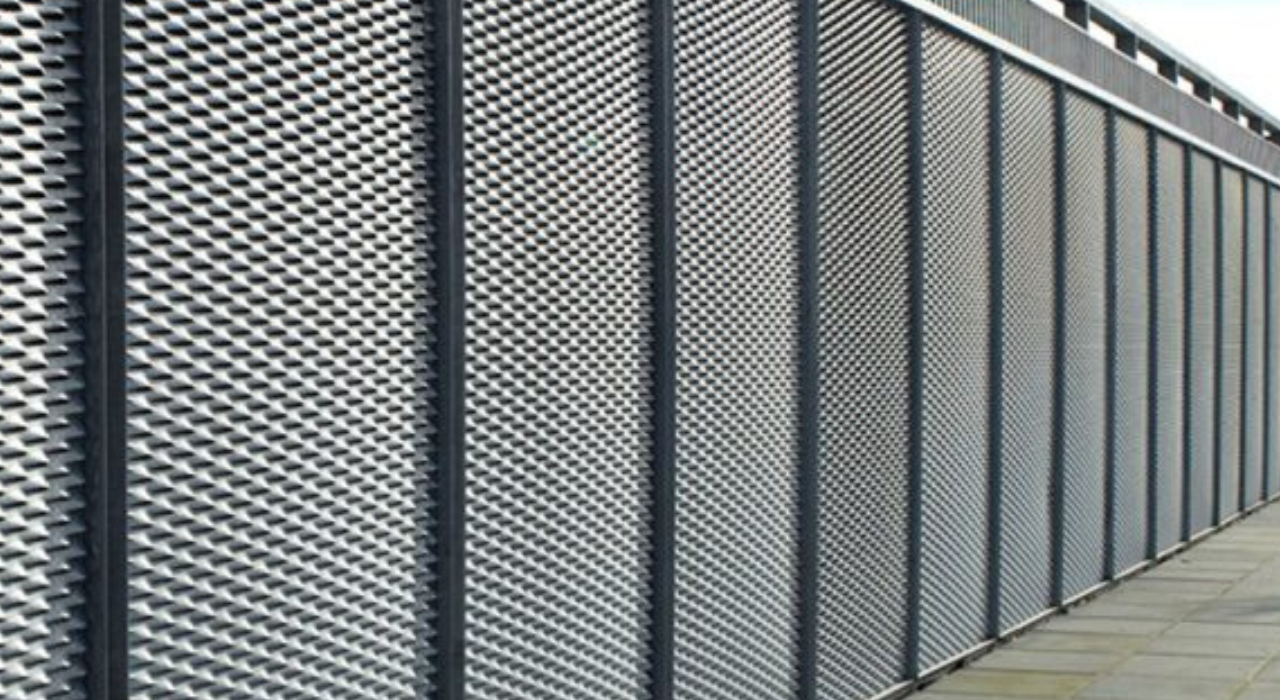An extended metal mesh is made by cutting and extending a sheet of metal to shape a cross-section with precious diamond molded openings. This method uses the whole sheet, resulting in zero waste and excessive material efficiency. Commonly made from metallic, aluminum, or stainless steel, the increased metallic mesh is especially durable and recyclable. Its lightweight but sturdy shape reduces the need for uncooked materials and transportation energy.
In architectural applications, it provides natural light and airflow, improving energy efficiency. Additionally, expanded metal mesh is used for erosion manipulation, soil stabilization, and protection fencing because of its energy and versatility. Its lengthy lifespan and minimal protection necessities further enhance its environmental benefits, making it a sustainable choice across diverse industries.
Positive Environmental Effects of Expanded Metal Mesh
Extended metal mesh gives several nice environmental results, including
Material efficiency
One of the foremost environmental benefits of elevated steel mesh is its material performance. The producing method includes slitting and stretching a sheet of metallic to create openings, a technique that makes use of the complete sheet without producing waste. In contrast to perforated steel, in which material is eliminated to create holes, resulting in scrap, expanded metal mesh maximizes the usage of raw materials. This efficiency no longer conserves resources but also reduces the strength intake related to the extraction and processing of those substances.
Durability and Longevity
The inherent energy and durability of elevated metal mesh imply it has an extended service existence. This sturdiness reduces the frequency of replacements, mainly to decrease environmental costs related to manufacturing, transportation, and installation of recent materials. Products with longer lifespans contribute less to landfill waste and decrease the demand for constant production, which in turn lowers the general environmental footprint of those products.
Reduced Resource Use
Improved metal mesh required fewer raw substances compared to stable metal sheets. Its lightweight nature approach means less material is needed to attain the same strength and functionality. This discount in aid use without delay interprets to a smaller environmental impact in the course of the production segment. Moreover, the transportation of lighter materials consumes much less energy, similarly lowering the carbon footprint related to improved metal mesh.
Improved Energy Efficiency
In architectural and construction programs, extended metal mesh plays a vital function in improving energy efficiency. While used as a shading device or facade, it lets herbal mild penetrate at the same time lowering the heat gain from direct daylight. This herbal law of light and temperature can substantially reduce the want for artificial lighting fixtures and aircon, leading to substantial power savings. Lower electricity consumption not only reduces application fees but also diminishes greenhouse gas emissions from energy plants.
Permeability
The open design of elevated metal mesh allows for natural mild air to skip through, improving airflow and reducing the need for artificial ventilation structures. Stepped-forward air movement can lead to better indoor air fine, growing healthier residing and operating environments. Moreover, herbal lighting fixtures reduce reliance on artificial lighting, holding energy and decreasing the environmental effect of the power era.
Erosion Control and Soil Stabilization
In landscaping and civil engineering initiatives, elevated metal mesh is hired to boost soil and save you from erosion. Its shape facilitates stabilizing the ground, reducing soil loss and retaining soil health. This software is mainly useful in preventing landslides and handling erosion in environmentally touchy areas. Through controlling erosion, elevated metal mesh keeps the herbal panorama and stops sedimentation in waterways that may harm aquatic ecosystems.
Enhanced Safety and Security
Increased metal mesh is widely used for fencing and barriers because of its energy and versatility. These applications enhance safety and security without the need for additional materials, ensuring lengthy-term environmental benefits through decreased protection and alternatives. The durability of increased metal mesh in safety applications reduces the frequency of material replacement, further conserving resources and minimizing waste.
Conclusion
Expanded metal mesh gives significant environmental advantages, which include material efficiency, recyclability, and durability, reduced resource use, and advanced energy performance. Its applications in erosion management, soil stabilization, and protection enhance sustainability and promote more healthy environments. As industries' consciousness on eco-friendly solutions, extended metal mesh sticks out as a versatile, sustainable preference that contributes to a greener planet.

